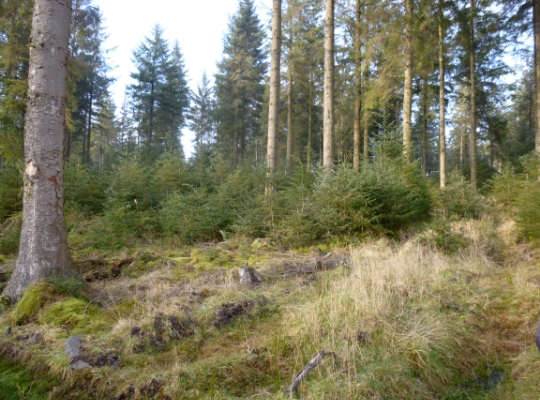The climate in Wales is changing and will have a range of impacts on trees and woodlands.
We provide a summary of the main impacts, resources to support adaptation, and information about climate change policy, forest governance, and grant support.
The climate in Wales is projected to change, with an increase in mean temperatures in all regions of Wales in all seasons, including milder winters with fewer days of ground frost and lying snow. There will be an increase in storm events, and changes in seasonal rainfall patterns, with wetter autumns and winters, and drier springs and summers.
These changes in climate will have a range of impacts on forestry in Wales, including:
Adverse impacts from climate change can increase the susceptibility of forests to insect pests or pathogen damage. The changing climate will also allow the range and population of some pests and pathogens to expand, resulting in increased risk of damage and tree mortality from new and existing pests and diseases.
The Third UK Climate Change Risk Assessment (CCRA3) 2022 includes a Regional Summary of the Evidence-Report-for Wales and a UK sector briefing for land use, land-use change and forestry (LULUCF).
Forest Research provides a summary of key findings and recommendations for climate change in Wales including an overview of adapting forests and woodlands.
Natural Resources Wales (NRW) has developed woodland and forestry guidance and resources for increasing resilience including Good Practice Guides on increasing tree species diversity and improving the structural diversity of Welsh woodlands.

Natural Resources Wales manages the Welsh Government Woodland Estate in Wales, and acts as the forestry regulatory authority on behalf of Senedd Cymru (Welsh Government).
Woodlands for Wales is the Welsh Government’s 50-year strategy for woodlands and trees in Wales, including responding to climate change. The Welsh Government also provides guidance, policies and publications on forestry.
The Climate Change Act 2008, the Well-being of Future Generations (Wales) Act 2015 and the Environment (Wales) Act 2016 provide the legal framework for climate change policy in Wales. Welsh Government approved a net zero target for 2050 in The Climate Change (Interim Emissions Targets) (Wales) (Amendment) Regulations 2021.
The Welsh Government’s plans to meet the emissions reduction targets are outlined in five-yearly budgets, currently the Net Zero Wales Carbon Budget 2 (2021 to 2025). The Welsh Government’s national climate change adaptation plan is Prosperity for All: A Climate Conscious Wales.
Details about Welsh Government forestry grants is available.
Low impact silvicultural systems have been adopted in an exposed site in northeast Wales to help reduce the risk of storm damage and other climate change impacts.